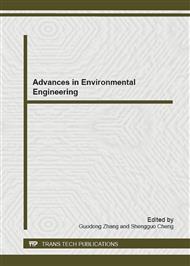p.744
p.748
p.753
p.757
p.762
p.769
p.773
p.777
p.781
Analysis Models of Storm Runoff Volumes from Small Watershed in Chongqing Metropolitan Area
Abstract:
The storm runoff model in mountain city, based on hydrology, hydraulics and the watershed spatial data is targeted at the features of large slope of land surface and fast speed of runoff-contribution & flow-concentration in mountain city, is of great significance to achieve the goal of making an analog experiment on the processing of urban storm runoff, to locate the inland inundation spot and predict the time of the water withdrawal as well as manage and utilize the water volume and quality of the storm runoff. As a result, we’ve developed a distributed storm runoff model in small watershed in the mountain city on the basis of GIS platform. This model has been applied for analyzing the storm runoff (twice) in Panxi River Valley in North New Zone of Chongqing. The results showed that the Nash-Sutcliffe coefficient, Ens is 0.56; and the relative error is 11.8%, compared the simulated result with the actual measurements 2010/6/7; the Ens is 0.76,; and the relative error is 8.82%, compared the simulated result with the actual measurements 2010/7/4, it showed that the simulated result is of high precision with the model. According to the parameter sensitivity analysis, the most sensitive parameters of the storm runoff model are the width of subcatchment, slope and impermeable area rate.
Info:
Periodical:
Pages:
762-768
Citation:
Online since:
November 2012
Authors:
Keywords:
Price:
Сopyright:
© 2012 Trans Tech Publications Ltd. All Rights Reserved
Share:
Citation:


